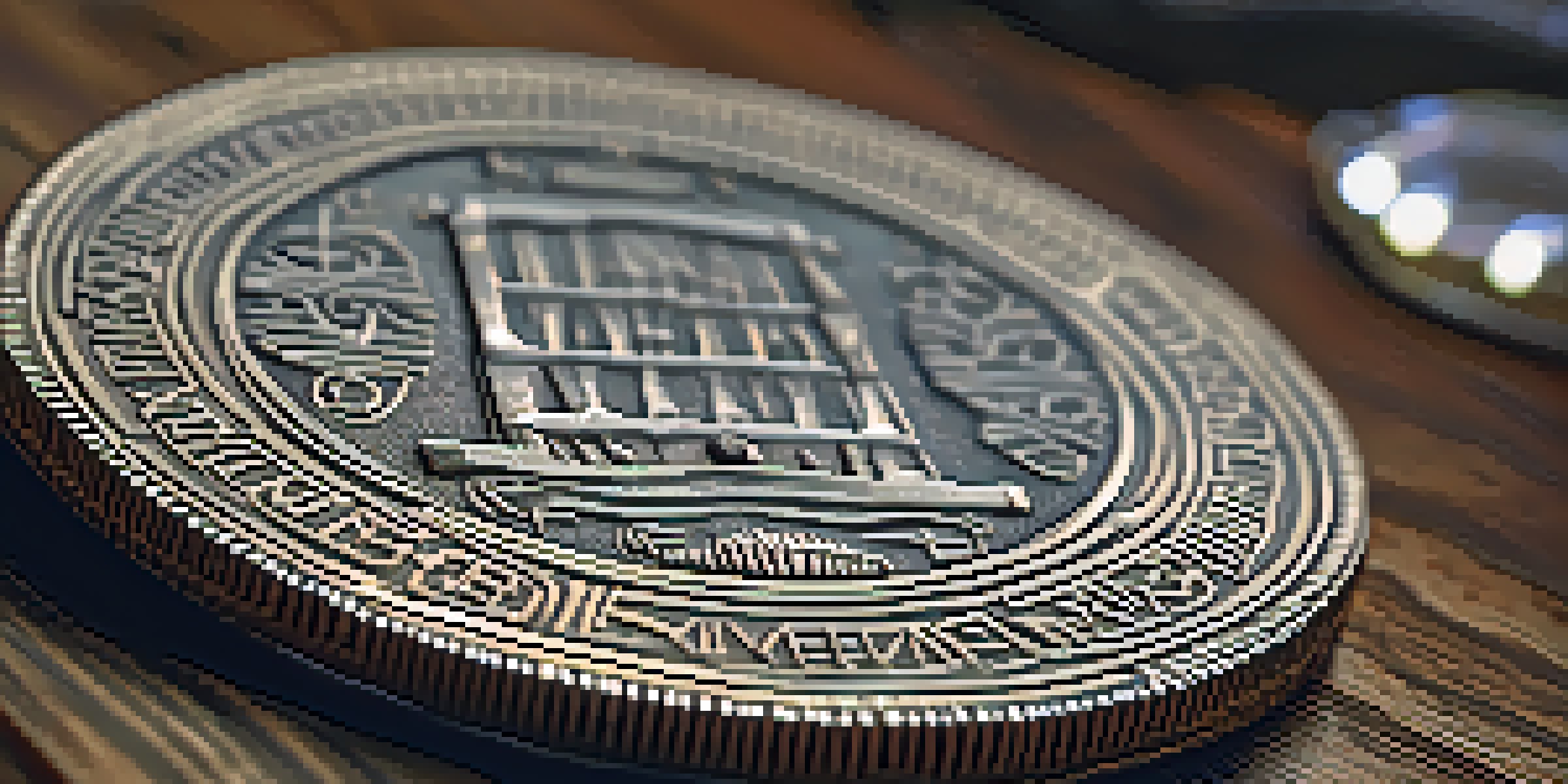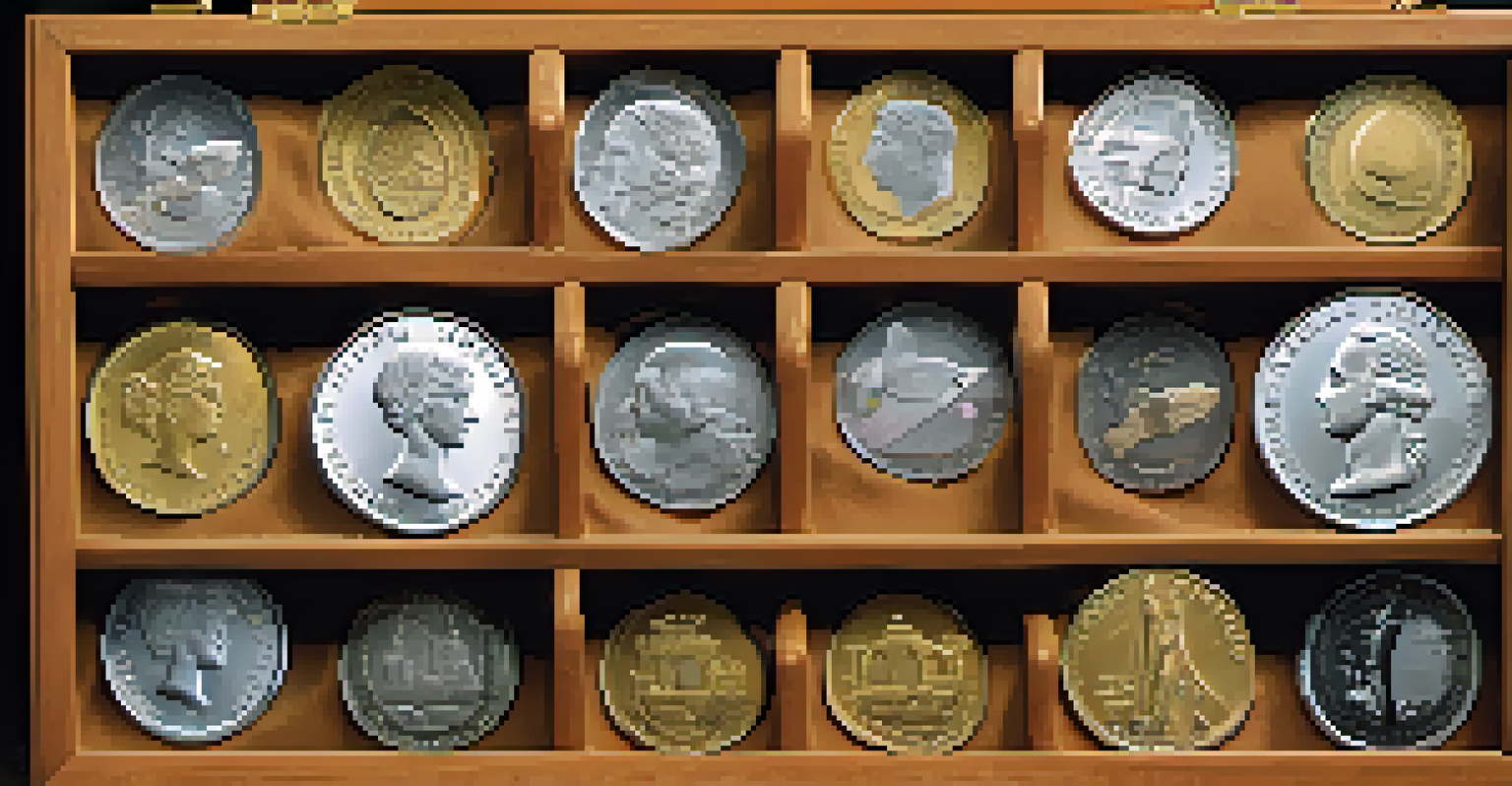How to Identify Fake Coins: A Collector's Guide

Understanding the Importance of Authenticity in Coins
When it comes to coin collecting, authenticity is paramount. Collectors invest time and money into building their collections, and counterfeit coins can significantly diminish their value. Knowing how to identify fake coins not only protects your investment but also enhances your knowledge and appreciation of numismatics.
Collecting coins is like a treasure hunt; the thrill is in the discovery, but knowing what you have found is what makes it valuable.
The thrill of finding a rare coin can quickly turn into disappointment if that coin turns out to be a fake. Understanding the historical context and the minting process of coins can help you spot inconsistencies. Many collectors develop a keen eye through experience, but starting with the basics is crucial for beginners.
Ultimately, recognizing authentic coins helps maintain the integrity of the coin-collecting community. When you can confidently identify genuine coins, you contribute to a culture of trust and respect among fellow collectors.
Common Characteristics of Genuine Coins
Genuine coins often exhibit specific characteristics that can help you distinguish them from fakes. For instance, the weight and dimensions of a coin should match the specifications provided by reputable sources. Even slight variations can indicate a counterfeit, so it's essential to have a reliable scale and caliper on hand.

Another telltale sign of authenticity is the quality of the minting. Genuine coins typically display sharp details, crisp edges, and clear inscriptions. If a coin looks overly smooth or has fuzzy details, it may have been altered or forged.
Authenticity Protects Your Investment
Understanding how to identify genuine coins is essential for safeguarding your collection from counterfeits.
Additionally, examining the coin's surface can reveal a lot. Authentic coins have a specific texture, and features like luster and patina take time to develop. Familiarizing yourself with these characteristics will equip you to better identify authentic pieces.
Tools to Help Identify Fake Coins
Utilizing the right tools can make the process of identifying fake coins easier and more effective. A jeweler's loupe, for example, allows you to inspect fine details up close, revealing potential signs of forgery. This small magnifying glass can help you spot discrepancies in lettering or design that are often missed by the naked eye.
The joy of collecting is not just in the coins, but in the stories they tell and the history they carry.
In addition to a loupe, a digital scale and calipers are essential for measuring weight and dimensions accurately. These tools can help verify that a coin conforms to expected standards. Many counterfeits may look good visually but fail in physical specifications.
Lastly, investing in a good reference book or app dedicated to your specific area of collection can provide valuable insights. These resources often include photographs and descriptions that make it easier to identify fakes and understand what to look for in genuine coins.
Recognizing Red Flags in Coin Quality
As you examine coins, be on the lookout for red flags that may indicate a counterfeit. For instance, if a coin has an unusual color or shine, it might be a sign that it has been plated or altered. Authentic coins have a natural patina that can’t be replicated artificially.
Another red flag is the presence of bubbles or pits on the surface, which can be a result of poor casting techniques. Genuine coins typically have smooth surfaces and clear details, while fakes might show signs of rough craftsmanship.
Use Tools for Accurate Identification
Employing tools like a jeweler's loupe and digital scales can greatly enhance your ability to spot fake coins.
Lastly, if a deal seems too good to be true, it often is. Be cautious when purchasing coins from unverified sources or at prices significantly lower than market value. Trust your instincts and do your research before making a purchase.
The Role of Professional Grading Services
Professional grading services are invaluable in the coin-collecting world. These organizations assess coins for authenticity and assign grades based on condition and quality. By utilizing these services, collectors can ensure they are investing in genuine pieces.
Grading companies provide encapsulated coins, which protect them while also offering a guarantee of authenticity. This can offer peace of mind when buying or selling coins, as the grading process adds an extra layer of credibility.
However, it’s important to note that even professional services can make mistakes. Therefore, understanding the grading system and doing your own checks can help you remain vigilant and informed about your collection.
Practicing with Sample Coins and Resources
One of the best ways to develop your coin identification skills is by practicing with sample coins. Many collectors start with inexpensive coins they suspect might be fakes, allowing them to hone their skills without the risk of financial loss. This practice can build confidence and improve your eye for detail.
Resources such as online communities, forums, and local coin clubs can provide a wealth of knowledge. Engaging with fellow collectors allows you to share experiences, ask questions, and learn from others who may have encountered similar challenges.
Stay Informed on Counterfeiting Trends
Keeping up with evolving counterfeiting techniques through reputable sources helps collectors remain vigilant.
Additionally, attending coin shows or exhibitions can offer hands-on experience with a variety of coins. These events often feature experts who can provide demonstrations and tips on how to spot fakes, making them an excellent opportunity for learning.
Staying Updated on Counterfeit Techniques
Counterfeiting techniques are constantly evolving, and staying informed is crucial for collectors. Just as technology improves, so do the methods used by counterfeiters. Regularly researching new types of counterfeits can help you remain vigilant in your collecting efforts.
Following reputable numismatic websites, blogs, or social media accounts can keep you updated on the latest trends in coin counterfeiting. These platforms often share news, articles, and alerts about new counterfeit techniques that could affect your collection.

Furthermore, discussing these developments with fellow collectors can enhance your understanding. Sharing information and experiences is a powerful way to build a knowledgeable community that can help spot and combat counterfeits together.